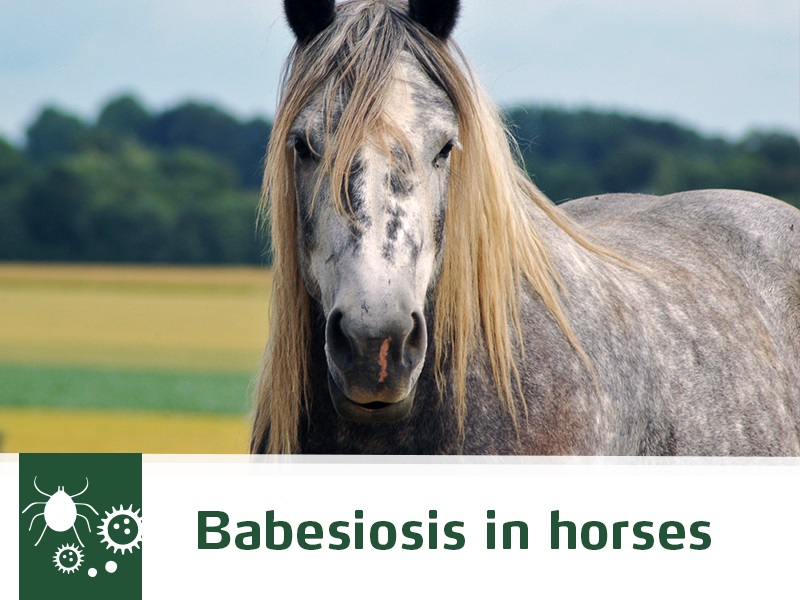
Babesiosis in horses

Babesiosis, also known as equine pyroplasmosis, is a non-contagious tick-born disease caused by the Babesia caballi and Babesia equi especies of protozoa.
This infection is a problem in international horse trading and competitions. Many countries, like the United States, will have import regulations regarding the infection status. Animals that never have been infected that come in contact with infected ticks will most likely develop the disease.
Ticks house these parasites and transmit them to the horse when feeding but it cannot be passed from horse to horse, unless there is blood transfer between animals (like on needles, blood transfusions or any sharp instrument with contaminated blood). Usually though, infected horses act as the source of the infection for ticks and then the ticks will go on to infect other animals.
It causes severe destruction of red blood cells and in the case of B.caballi, the parasite itself might clog the smaller calibre vessels in the lungs, liver or even central nervous system, damaging them.
With the progressive destruction of red blood cells and the increase in parasite numbers, affected animals will display reluctance to exercise, fever, anorexia, small dotting haemorrhages in mucous membranes (like inside the mouth, vulva or eye), dehydration, colic, abdomen 0r limb oedema and/or difficulty breathing.
These clinical signs usually only manifest in acute diseases. Animals that manage to survive this may become persistent yet immune carriers and may generate chances for ticks to infect animals that have never contacted babesiosis.
The best way to prevent babesios is to run a tight ship regarding tick control on your horses and always follow good biosecurity measures (no reusing needles, always disinfecting sharp instruments between horses).
Would you like to know more about horses? Check our Equine Courses:
Equine courses
Published: 03 Oct 2016
Read the previous article: Notoedric Mange

